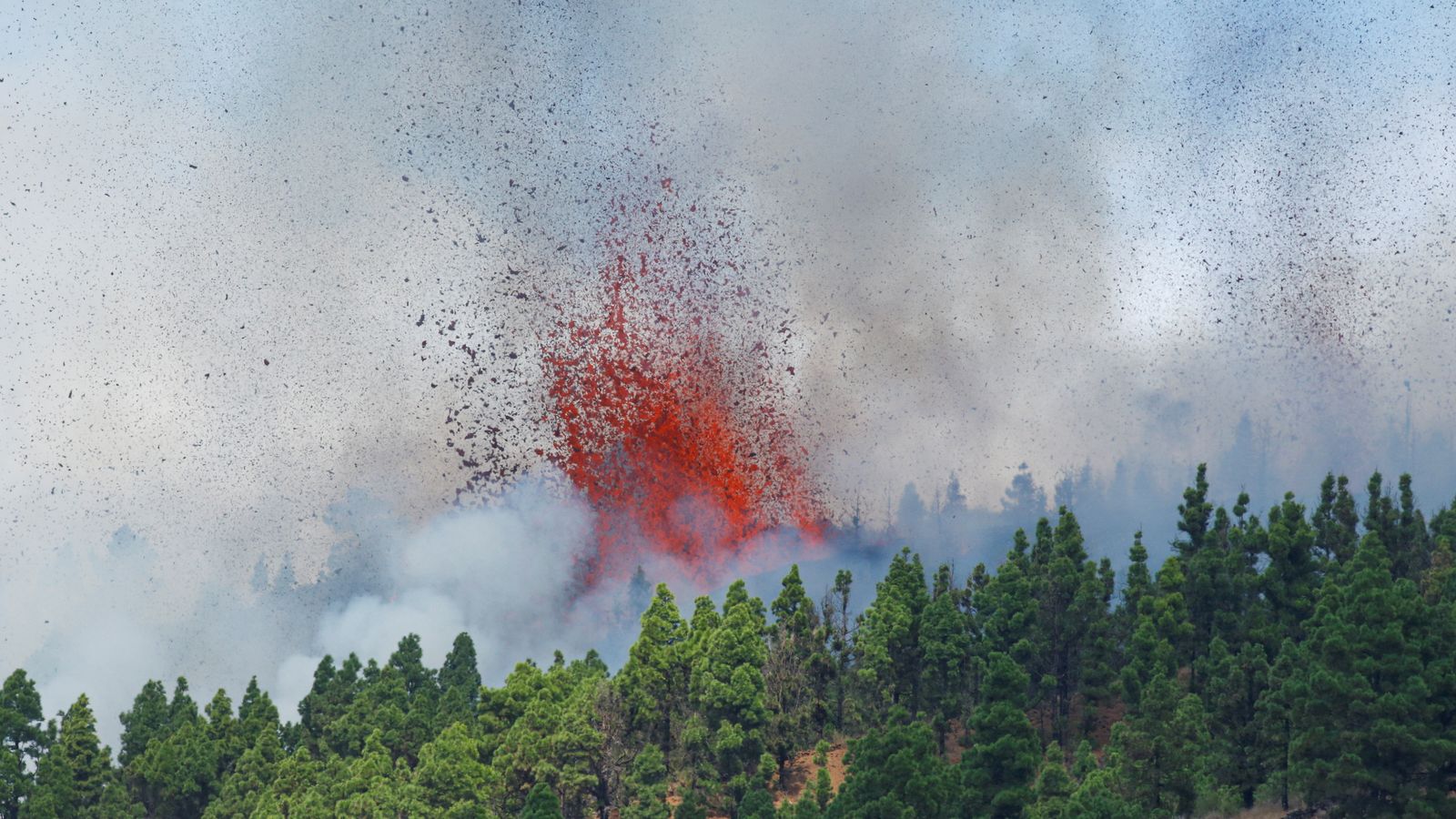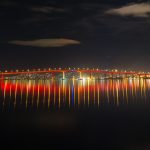Around 5,000 people on La Palma in the Canary Islands have been evacuated to escape the erupting Cumbre Vieja volcano.
The eruption started on Sunday afternoon and officials said about 100 properties had so far been destroyed by lava.
No deaths have been reported.
The four villages evacuated included El Paso and Los Llanos de Aridane, with temporary shelters set up to house displaced residents.
Lava was still flowing at 700m (2,300ft) per hour on Monday, according to the Canary Islands Volcanology Institute, but mostly through unpopulated areas.
Canary Islands President Angel Victor Torres told locals to “stay in your houses” on Sunday after people from all over the island were blocking roads trying to get close to the volcano.
“It is not foreseeable that anyone else will have to be evacuated,” he said.
Spain wildfire: More towns evacuated on Costa del Sol as soldiers deployed
Spain: Teenager, 19, sues health trust for £2.5m after DNA test reveals she was swapped at birth
Spain: Intense flooding sees cars swept into Mediterranean Sea and buildings filled with mud in Alcanar
Mariano Hernandez, president of La Palma island, also asked people to stay away and told Spanish radio network Cadena Ser that the lava had destroyed about 100 houses so far.
Local airline Binter said it had cancelled four flights to and from the neighbouring island of La Gomera.
Spanish Prime Minister Pedro Sanchez arrived on La Palma late on Sunday to meet Mr Torres to oversea rescue efforts.
The prime minister delayed his departure for the UN General Assembly in New York to attend.
A 4.2-magnitude quake was recorded before the eruption, which took place in Cabeza de Vaca on the western slope of the ridge that descends to the coast.
La Palma had been on high alert after more than 22,000 tremors were reported in the space of a week.
Cumbre Vieja is part of a chain of volcanoes that last had a major eruption in 1971 and is one of the most active volcanic regions in the Canaries.
It lies in the south of La Palma, which is home to around 80,000 people.
Itahiza Dominguez, head of seismology of Spain’s geology institute, told Canary Islands Television that although it was too early to tell how long the eruption would last, prior eruptions had lasted weeks or even months.






















